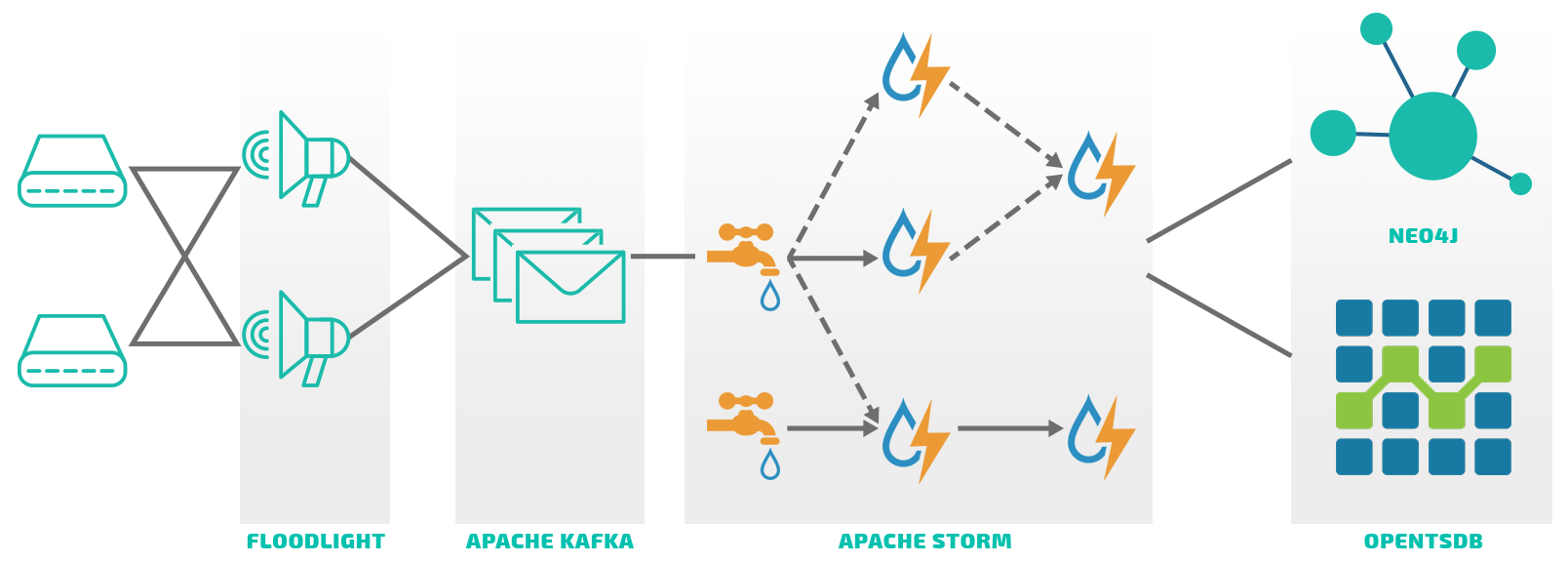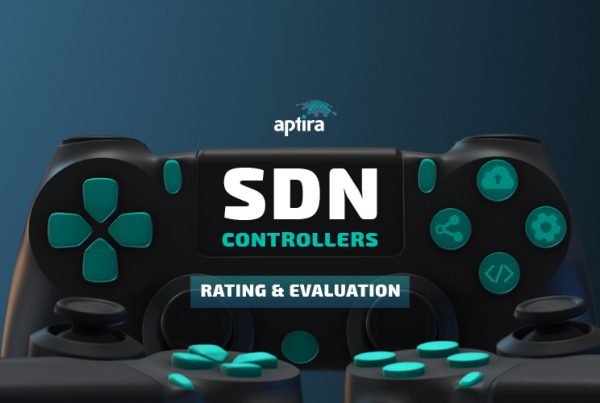
Our Open Source Software Defined Networking (SDN) Controller comparison continues with OpenKilda. OpenKilda is a Telstra developed OpenFlow based SDN controller currently being used in production to control the large Pacnet infrastructure. It has been shown to be successful in a distributed production environment.
Designed to solve the problem of implementing a distributed SDN control plane with a network that spans the Globe, OpenKilda solves the problem of latency while providing a scalable SDN control & data-plane and end-to-end flow telemetry.
Architecture
The Architecture of OpenKilda is shown in the figure below:

- Structurally, OpenKilda uses the Floodlight software to interact with switches using OpenFlow, but pushes decision making functionality into other parts of the stack.
- Kafka is used as a message bus for the telemetry from the Floodlight and feeds information into an Apache Storm based cluster of agents for processing.
- Storm passes the time-series data to OpenTSDB for storing and analysing.
- Neo4j is a graph analysis and visualisation platform.
Modularity and Extensibility
OpenKilda is built on several well-supported open-source components to implement a decentralised, distributed control plane, backed by a unique, well-designed cluster of agents to drive network updates as required. The modular nature of the architecture lends itself to being reasonably easily added new features.
Scalability
OpenKilda is able to scale process intensive profiling and decision-making functionality horizontally and independently of the control plane.
- OpenKilda approaches cluster scalability in a modular way. While Floodlight is used as a Southbound interface to the switch infrastructure, responsibility for PCE and telemetry processing is pushed northward into a completely separate Apache Storm based cluster. Each Floodlight instance is idempotent, with no requirement to share state. The Apache Storm cluster is by design horizontally scalable and allows throughput to be increased by adding nodes.
Architectural Scalability
- BGP is currently not implemented and may need to be developed.
Interfaces
- Southbound: It supports OpenFlow
- Northbound: Offer RESTful APIs only, which are limited compared to ONOS and ODL
Telemetry
Extracting usable telemetry from the infrastructure was a core design principle of OpenKilda, so one output from the Storm agents is streams of time-series data, collected by a Hadoop backed, OpenTSDB data store. This data can be used in a multitude of ways operationally, from problem management to capacity planning.
Resilience and Fault Tolerance
OpenKilda has no inbuilt clustering mechanism, instead relying on external tools to maintain availability. High availability is achieved by running multiple, identically configured instances, or a single instance controlled by an external framework that detects and restarts failed nodes.
Programming Language
OpenKilda is written in Java.
Community
While the functionality of OpenKilda in its intended space is promising, community support is still being cultivated, leaving much of the development and maintenance burden on its current users, with feature velocity slow. OpenKilda needs your support – chat with us to get involved.







